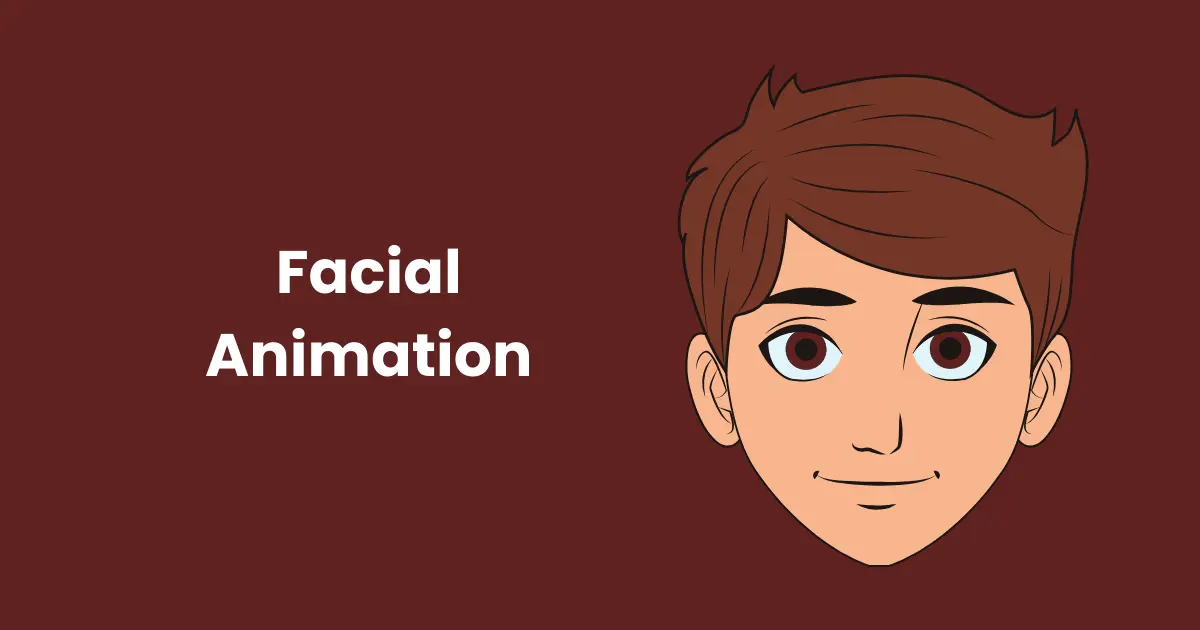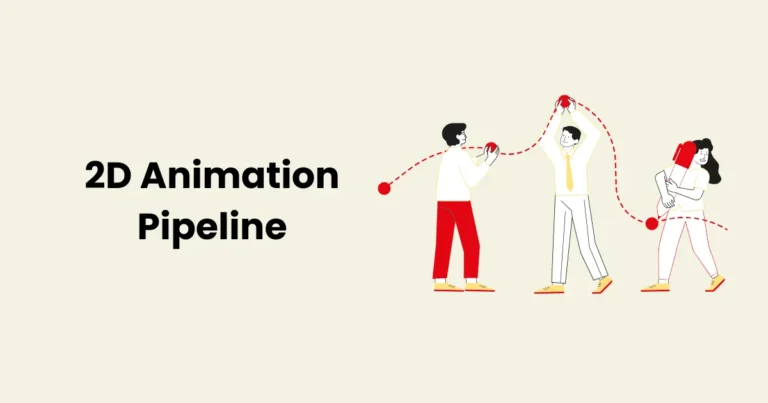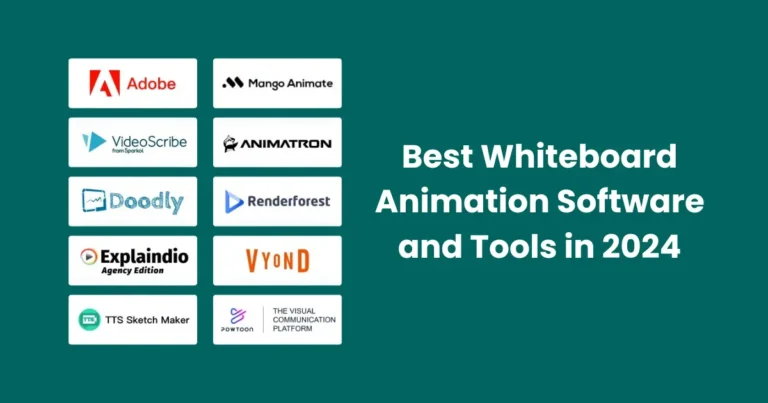3D Facial Animation: All you need to know in 2025

Contents
- 1 Importance of Facial Animation in Modern Media
- 2 Key Elements of Facial Animation
- 3 Tools and Software for Facial Animation
- 4 Steps to Create Realistic Facial Animation
- 4.1 1. Understand the Character’s Emotion and Personality
- 4.2 2. Create a Detailed Facial Rig
- 4.3 3. Design Key Expressions
- 4.4 4. Animate Lip Syncing
- 4.5 5. Focus on Micro-Expressions
- 4.6 6. Add Realistic Eye Movements
- 4.7 7. Adjust Timing and Spacing
- 4.8 8. Use Motion Capture for Realism (Optional)
- 4.9 9. Refine and Polish the Animation
- 4.10 10. Test in the Final Scene
- 5 Applications of Facial Animation
- 5.1 1. Film and Television
- 5.2 2. Video Games
- 5.3 3. Virtual Reality (VR) and Augmented Reality (AR)
- 5.4 4. Advertising and Marketing
- 5.5 5. Healthcare and Therapy
- 5.6 6. Education and E-Learning
- 5.7 7. Social Media and Digital Communication
- 5.8 9. Forensics and Criminal Investigations
- 5.9 10. Art and Creative Expression
- 5.10 Conclusion
Facial animation refers to the process of designing and animating realistic and expressive facial movements in digital characters. It is a specialized field within the broader realm of animation, focusing on capturing the subtleties of human emotions, expressions, and speech through meticulously crafted animations. By using facial animation, creators can bring characters to life, making them relatable and engaging for audiences across various media.
This animation plays a pivotal role in modern entertainment and technology. It is widely utilized in animated films, video games, virtual reality, and even healthcare. With advancements in technology, facial animation has evolved significantly, transitioning from basic expressions to complex, emotion-driven performances.
Through the precise synchronization of facial movements with dialogue and scenarios, this animation bridges the gap between artificial and authentic. It enables characters to exhibit emotions like joy, sadness, anger, or surprise, contributing to a more immersive storytelling experience.
Importance of Facial Animation in Modern Media
Facial animation has become an indispensable tool in modern media, shaping how stories are told and how characters resonate with audiences. Its ability to convey nuanced emotions and realistic expressions makes it a cornerstone in various entertainment and technological domains.

1. Enhancing Emotional Connection
Facial animation adds depth and relatability to digital characters. By mimicking real-life emotions, it allows viewers to form an emotional bond with characters, whether in an animated movie, a video game, or a virtual reality experience. Subtle movements like a smile, frown, or raised eyebrow can significantly enhance the storytelling process.
2. Driving Realism in Visual Storytelling
In today’s media landscape, audiences demand authenticity. Facial animation bridges the gap between the digital and real world by creating lifelike characters that feel human. This realism is especially crucial in films and games where immersive narratives are a priority.
3. Key in Gaming and Interactive Media
In video games, facial animation is critical for delivering compelling character performances. As players interact with non-playable characters (NPCs), realistic facial expressions help convey critical plot points, emotional undertones, or reactions to in-game events.
4. Revolutionizing Virtual Reality (VR) and Augmented Reality (AR)
Facial animation has elevated VR and AR experiences by adding a new layer of interactivity. Real-time facial animation powered by advanced motion capture technology allows avatars to mimic users’ expressions, making digital interactions more engaging and personalized.
5. Supporting Accessibility and Therapy
Facial animation extends beyond entertainment to serve practical purposes, such as aiding in healthcare and therapy. For instance, animated characters with expressive faces are used in therapy for children with autism to teach emotional recognition and social interaction.
6. Redefining Animated Movies and TV Shows
In the animation industry, this type of animation enables the creation of memorable characters. Iconic movies like Frozen and Toy Story owe much of their success to the detailed facial animation that brings their characters to life, capturing audiences’ hearts worldwide.
Facial animation is a dynamic tool that continues to evolve with technological advancements. Its role in modern media is not just about creating visual appeal but also about connecting emotionally, engaging audiences, and enhancing the overall storytelling experience.
Key Elements of Facial Animation
Creating realistic and compelling facial animation requires a deep understanding of human anatomy and emotion. Several key elements work together to produce expressive and believable facial movements. Here are the essential components of facial animation:

1. Facial Expressions
Facial expressions are the foundation of facial animation, showcasing a character’s emotions and reactions. From joy to anger, sadness to surprise, expressions must be accurate and fluid to resonate with viewers.
- Micro-expressions: Small, involuntary facial movements that convey genuine emotions.
- Macro-expressions: Larger, more deliberate expressions used for clear communication.
2. Lip Syncing
Lip syncing involves aligning the character’s lip movements with spoken dialogue. Proper synchronization ensures the speech appears natural and believable.
- Phoneme-based Animation: Matching mouth shapes with the sounds (phonemes) of speech.
- Viseme Mapping: Connecting visual elements of speech with corresponding facial movements.
3. Eye Movements
The eyes are often referred to as the “windows to the soul.” Realistic eye movements are critical for expressing emotions, focus, and thought processes.
- Blinking: Adds realism and prevents a static or lifeless look.
- Gaze Direction: Indicates where a character is looking, which can convey attention, fear, or curiosity.
4. Brow and Forehead Movements
The brow and forehead play a significant role in expressing emotions like anger, confusion, or surprise. Their movements provide subtle cues that enhance the overall performance.
- Raised Brows: Often signal surprise or curiosity.
- Furrowed Brows: Indicate frustration or deep concentration.
5. Cheeks and Jaw Movement
The cheeks and jaw contribute to expressions and speech clarity. They help depict emotions like laughter, exhaustion, or anger.
- Cheek Raising: Adds to a genuine smile or squinting motion.
- Jaw Positioning: Essential for accurate speech animation and showing tension or relaxation.
6. Emotional Subtlety
Effective facial animation isn’t just about exaggeration; it’s also about capturing subtle emotions that make a character feel alive. A slight twitch of the mouth or a hesitant blink can convey hesitation or doubt.
By combining these elements with attention to detail, animators can create dynamic and engaging animations that bring characters to life in a way that feels authentic and emotionally resonant.
Tools and Software for Facial Animation
The art of facial animation has evolved significantly with advancements in technology. Numerous tools and software solutions now empower animators to create expressive and realistic facial movements with precision. Below is a comprehensive list of some of the most widely used tools for this kind of animation.

1. Maya by Autodesk
Maya is a leading software in the animation industry, known for its robust facial rigging and animation tools.
- Features:
- Advanced rigging capabilities for facial setups.
- Blendshape and bone-based animation options.
- Integration with motion capture data for realistic facial movements.
- Usage: Commonly used in movies, games, and commercials.
2. Blender
Blender is a free, open-source software offering powerful tools for facial animation.
- Features:
- Shape keys for creating facial expressions.
- Grease Pencil for 2D facial animation.
- Compatibility with external plugins for motion capture integration.
- Usage: Popular among indie creators and smaller studios.
3. Unreal Engine
Unreal Engine is a real-time 3D creation platform widely used in gaming and virtual production.
- Features:
- MetaHuman Creator for realistic digital humans with lifelike facial animation.
- Real-time animation tools for facial expressions and lip syncing.
- Integration with motion capture devices for performance-based animation.
- Usage: Preferred for real-time applications like games and virtual reality.
4. Faceware Studio
Faceware Studio specializes in facial motion capture and real-time animation.
- Features:
- AI-driven tracking for capturing subtle facial expressions.
- Real-time face tracking from video footage.
- Compatibility with major animation software.
- Usage: Often used in games, VR, and live performances.
5. ZBrush by Pixologic
ZBrush is a digital sculpting tool that excels at creating detailed facial models for animation.
- Features:
- Sculpting tools for creating expressive facial features.
- Blendshape creation for realistic expression animation.
- Integration with animation platforms like Maya and Blender.
- Usage: Ideal for high-detail facial modeling and animation.
6. Adobe Character Animator
Adobe Character Animator is a beginner-friendly tool for creating facial animations in real time.
- Features:
- Real-time facial tracking using a webcam.
- Automatic lip syncing with audio input.
- Easy-to-use interface for quick animation.
- Usage: Perfect for 2D animation, live streaming, and simple projects.
7. Houdini by SideFX
Houdini is known for its procedural animation capabilities, including facial animation.
- Features:
- Procedural workflows for facial rigging and animation.
- Advanced tools for creating dynamic and realistic expressions.
- Integration with other 3D software.
- Usage: Popular in VFX-heavy projects and complex animations.
8. Reallusion iClone
iClone is a versatile tool for 3D animation with dedicated facial animation features.
- Features:
- Facial mocap integration with devices like Faceware.
- Expression libraries for quick animations.
- Real-time editing capabilities.
- Usage: Often used for quick prototyping and production.
9. Daz 3D
Daz 3D focuses on creating realistic 3D characters with facial animation capabilities.
- Features:
- Prebuilt facial morphs for rapid expression design.
- Compatibility with external animation software.
- High-quality character models with detailed facial rigging.
- Usage: Suitable for previsualization and indie projects.
Choosing the Right Tool
The choice of facial animation software depends on the project’s requirements, budget, and technical expertise. Tools like Maya and Unreal Engine are ideal for high-end productions, while Blender and Adobe Character Animator cater to smaller-scale projects. With the right software, animators can bring their characters to life, delivering emotionally engaging performances.
Steps to Create Realistic Facial Animation
Creating realistic facial animation requires a combination of artistic skill, technical knowledge, and the use of advanced tools. Here are the essential steps to craft lifelike animations:

1. Understand the Character’s Emotion and Personality
Before animating, understand the character’s backstory, personality, and the emotion they need to convey. A clear vision helps in designing facial expressions that align with the character’s role and the scene’s context.
- Tip: Study reference materials like actors’ performances or real-life emotions for accuracy.
2. Create a Detailed Facial Rig
A good facial rig is the foundation of realistic facial animation. This involves creating a system that allows animators to manipulate the character’s face.
- Types of Facial Rigs:
- Blendshape-based Rigging: Allows smooth transitions between expressions.
- Bone-based Rigging: Uses joints for flexible animation.
- Hybrid Rigs: Combines blendshapes and bones for detailed control.
3. Design Key Expressions
Define the key facial expressions that the character will use throughout the animation. These expressions serve as benchmarks for transitions and help in achieving consistency.
- Examples include happiness, sadness, surprise, anger, and neutrality.
4. Animate Lip Syncing
Lip syncing involves matching the character’s mouth movements to the dialogue. Pay attention to the phonemes (speech sounds) to ensure that each mouth shape corresponds to the spoken word.
- Steps for Lip Syncing:
- Break down the dialogue into phonemes.
- Match each phoneme with the appropriate mouth shape (viseme).
- Smooth transitions between shapes for natural movement.
5. Focus on Micro-Expressions
Micro-expressions are subtle, involuntary movements that make the animation more lifelike. These include small twitches, eyebrow raises, or slight mouth curls.
- Tip: Use real-life video references to capture these nuances.
6. Add Realistic Eye Movements
The eyes play a crucial role in expressing emotions and thoughts. Incorporate natural movements like blinking, eye shifts, and dilation.
- Key Points to Consider:
- Blinking Patterns: Ensure blinks are irregular for realism.
- Gaze Direction: Align gaze with the character’s focus or dialogue.
7. Adjust Timing and Spacing
Timing and spacing are vital for creating fluid, believable animations. Use principles like “slow in and slow out” to make transitions between expressions smooth and natural.
- Tip: Exaggerate timing during the blocking phase and refine during final passes.
8. Use Motion Capture for Realism (Optional)
For highly realistic results, use motion capture (mocap) technology to record real facial movements and apply them to the character.
- Tools: Faceware, iClone, or Unreal Engine’s MetaHuman Creator.
- Steps:
- Capture the actor’s performance.
- Clean up the data to remove errors or noise.
- Apply the data to the character rig.
9. Refine and Polish the Animation
After completing the initial animation, review and refine it. Add subtle adjustments to expressions, correct inconsistencies, and ensure seamless transitions.
- Checklist for Refinement:
- Are the emotions clear and believable?
- Is the lip syncing perfectly aligned with the dialogue?
- Are micro-expressions enhancing realism?
10. Test in the Final Scene
Integrate the facial animation into the final scene to ensure it matches the lighting, camera angles, and overall mood. Make any necessary tweaks to improve the animation’s impact.
Realistic facial animation combines technical precision with artistic flair. By following these steps and using advanced tools, animators can create characters that connect deeply with audiences, making their stories truly unforgettable.
Applications of Facial Animation
Facial animation plays a pivotal role across various industries, enhancing storytelling, realism, and interactivity. Its ability to convey emotions and bring characters to life makes it a versatile tool in modern media and technology. Here are the key applications of facial animation:

1. Film and Television
Facial animation is essential in movies and TV shows, especially in creating realistic characters for live-action and animated projects.
- Usage Examples:
- Bringing animated characters to life in films like Frozen or Avatar.
- Enhancing CGI characters in live-action movies.
- Adding emotional depth to animated TV series.
- Impact: Creates believable performances that evoke empathy and engagement.
2. Video Games
In gaming, facial animation enhances character realism and immersion, making interactions and narratives more impactful.
- Usage Examples:
- Real-time animations for cutscenes and gameplay.
- Interactive storytelling through expressive NPCs (non-playable characters).
- Realistic player avatars in VR and RPG games.
- Impact: Builds emotional connections between players and characters, improving the gaming experience.
3. Virtual Reality (VR) and Augmented Reality (AR)
Facial animation adds realism to VR and AR experiences, making digital avatars and virtual environments more lifelike.
- Usage Examples:
- Real-time facial tracking for virtual avatars.
- Immersive social interactions in VR platforms like Meta Horizon Worlds.
- Enhanced AR applications for education and entertainment.
- Impact: Creates deeper engagement by simulating real-world interactions.
4. Advertising and Marketing
Facial animation is increasingly used in creating relatable and engaging characters for advertisements.
- Usage Examples:
- Animated mascots representing brands, such as Geico’s Gecko.
- Emotional storytelling in commercials using animated characters.
- Interactive marketing campaigns with digital influencers.
- Impact: Captures audience attention and communicates messages effectively.
5. Healthcare and Therapy
Facial animation is utilized in healthcare to improve patient care and treatment outcomes.
- Usage Examples:
- Virtual simulations for training medical professionals.
- Therapy tools for patients with social or emotional challenges.
- Assisting individuals with autism in understanding emotions through animated facial cues.
- Impact: Enhances learning and supports therapeutic goals.
6. Education and E-Learning
Educational platforms use facial animation to create engaging and interactive learning experiences.
- Usage Examples:
- Animated tutors for interactive lessons.
- Visual aids explaining complex subjects through animated expressions.
- Gamified learning environments with expressive characters.
- Impact: Increases student engagement and comprehension.
7. Social Media and Digital Communication
Facial animation is widely used in apps and social platforms to make communication more fun and interactive.
- Usage Examples:
- Animated emojis and stickers, such as Apple’s Animoji.
- Virtual avatars on platforms like Snapchat and TikTok.
- AI-driven virtual influencers for content creation.
- Impact: Enhances self-expression and social connectivity.
8. Artificial Intelligence and Robotics
Facial animation is critical in humanizing AI and robotic interactions, making them more relatable and effective.
- Usage Examples:
- Realistic facial expressions for humanoid robots like Sophia.
- Animated AI assistants with expressive interfaces.
- Emotion recognition systems that adapt responses based on user reactions.
- Impact: Builds trust and improves user interaction.
9. Forensics and Criminal Investigations
Facial animation aids in recreating facial expressions and features for investigative purposes.
- Usage Examples:
- Reconstructing faces for identification using 3D modeling.
- Analyzing facial expressions in forensic videos.
- Impact: Provides critical insights for law enforcement and investigations.
10. Art and Creative Expression
Artists and designers use facial animation to explore new forms of creative storytelling.
- Usage Examples:
- Digital art installations featuring animated faces.
- Animated short films and experimental media.
- Impact: Expands the possibilities for innovation in art and design.
Facial animation is a transformative technology with applications spanning entertainment, education, healthcare, and beyond. Its ability to simulate emotions and enhance user experiences continues to make it a cornerstone of modern media and interactive technologies.
Conclusion
Facial animation is a powerful medium that bridges the gap between technology and human emotion. By bringing characters to life with nuanced expressions and lifelike movements, it has revolutionized industries such as film, gaming, and virtual reality. Its ability to convey complex emotions enhances storytelling, creating deeper connections between audiences and animated characters. From blockbuster movies to educational tools and therapy applications, facial animation continues to push the boundaries of creativity and innovation.
As technology advances, the potential of facial animation grows exponentially. With the integration of artificial intelligence, motion capture, and real-time rendering, animators can achieve unparalleled realism and efficiency. Whether used to craft compelling narratives or enhance human-computer interactions, facial animation remains at the forefront of modern media and technology, shaping the way we communicate and engage with digital worlds.






